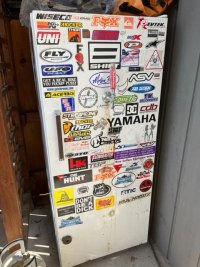Here you go IslandLizard and thanks for the help. I appreciate it
The recipe is as follows 4.32 lbs. of pilsner light DME, 12 oz. honey malt, 12 oz. wheat malt,, 1 oz. Willamette hops at 60 min and at 0 min, as for yeast the recipe calls for White labs WLP002 or Wyeast 1968. I can never find WLP002 so I've used WLP005 and Imperial A01 with great success. The batch before this one was with WLP005, but it was over a month past the expiration date. A friend of mine suggested trying a dry yeast and from what I found the Lallamand I used this time had a similar profile to the Wyeast 1968.
Directions
Steep grains in 150 degree water for 30 min, remove grain and rinse grain with 1 gallon of hot water. Then add water to bring up to 5.5 gallons and bring to a boil. Add DME and 1 oz hops continue boil for 60 min. At 50 min put wort chiller in boil. Once boil is complete add 1 oz hops. Chill to 70 degrees, sometimes I can only get to 72 depending on outside temp, this effects the water coming out of the hose more than I thought. Transfer to fermentation vessel, 7 gallon fermonster, add yeast at this time and aerate, put on airlock and put in closet under stairs, coolest area I have to put fermenter. This last time since I used dry yeast I rehydrated before pitching. One other thing I did different this time was I only added water to 4 gallons before I brought to a boil and mixed DME with water first before adding at boil. Oh I also add yeast to fermonster before I add the wort to make sure it's mixed well.
I'm pretty sure that the expired yeast is what hurt me on the last batch because when I cracked the lid open after fermentation it smelled absolutely awful, and like a ******* I tasted it to make sure. Well it was awful tasting too. This time the smell was fine but the taste was definitely off. So I'm sure the yeast got too hot because it literally stopped bubbling in a few hours after I saw the high temp. it didn't just slow down. I've made 3 successful batches like this and they were great. Two with WLP005 and one with Imperial A01.
On another note the salmon fishing was epic yesterday. Been a long time since I had a day like that.
Thank you






